For many people, it is no news that sheep are herbivores. They feed on fruits, greens, and other types of plant matter. But even at that, it is prudent to confirm if your sheep can eat a specific plant before the sheep consumes it.
Can sheep eat lettuce?
Yes, they can. Lettuce is healthy and safe for sheep. It can be offered as a snack or treat. But will not offer much as the main diet of a sheep. Notwithstanding, lettuce can be an addition to regular meals. Its texture, taste, and digestibility are some of the benefits sheep get from eating it.
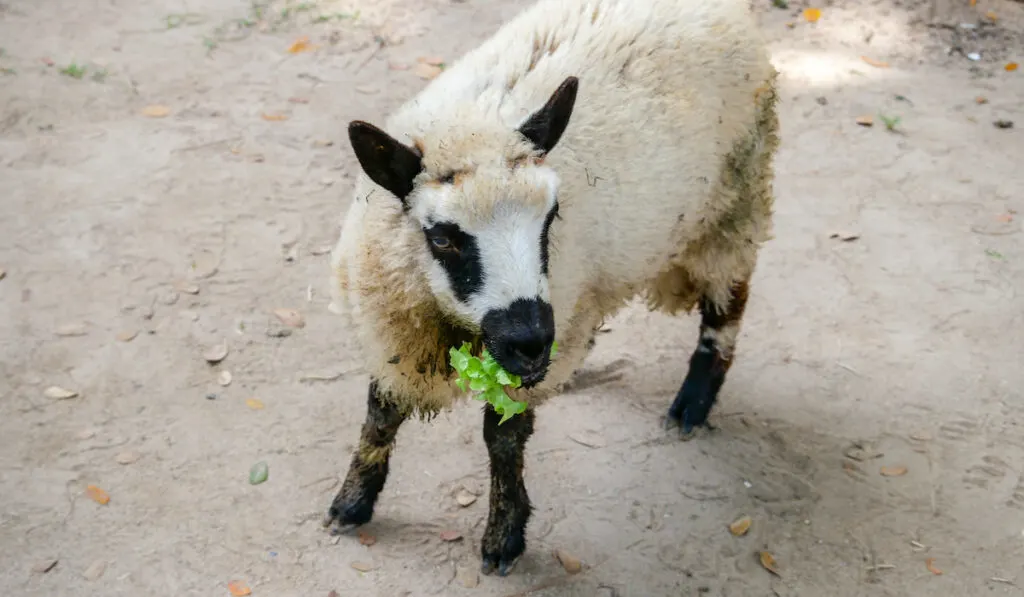
Now you know sheep can eat lettuce. But is there more to know? Yes, there is. In the rest of this article, we discuss the addition of lettuce to a sheep’s diet.
Can Sheep Eat Lettuce?
Lettuce is non-toxic to sheep. So, it poses no danger to the tetrapodal ruminants when they eat it. We can describe lettuce as being healthy. However, it does not really offer much to sheep in the way of nutrients.
Lettuce comprises mainly water, fiber, vitamin A, and vitamin C. Sheep already synthesize vitamin C in their tissues.
So, they can do without the vitamin C in lettuce. Also, a regular sheep diet would contain sufficient vitamin A. In the end, any vitamin A offered by lettuce will be supplemental, not essential.
All in all, lettuce is not essential to a sheep’s diet: it offers little or no calories, protein, or fat. But this does not rule out its value to sheep. Lettuce has a crunchy texture and a fresh taste. So, while it may not be a sheep’s main diet, it can be used as a snack or a treat.
Lettuce also comes in handy on hot days. Remember we mentioned that lettuce is mainly made up of water?
Well, lettuce contains about 96% water. When you feed lettuce to sheep on a hot day, the high water content can help mitigate the harshness of the heat.
Furthermore, lettuce is readily digestible. So, you should not have to worry about your sheep having digestion issues after consumption. Also, you do not have to worry about your pockets either: lettuce is inexpensive. Plus, it is not hard to come by.
Types of Lettuce
There are five types of lettuce. So in theory, you never have to give your sheep the same lettuce over and over. The five types of lettuce are:
- Romaine Lettuce
- Leaf Lettuce
- Crisphead Lettuce
- Stem Lettuce
- Butterhead Lettuce

Romaine Lettuce
Romaine lettuce is typified by long leaves – broad at the top but tapered towards the root. The upper portion of the leaves of Romaine lettuce has a deeper shade of green than the lower portion.
The upper portions are also not as firm as the lower portion. While the leaves might be slightly bitter, the center is sweet and crunchy. Romaine lettuce may also be called Cos lettuce.
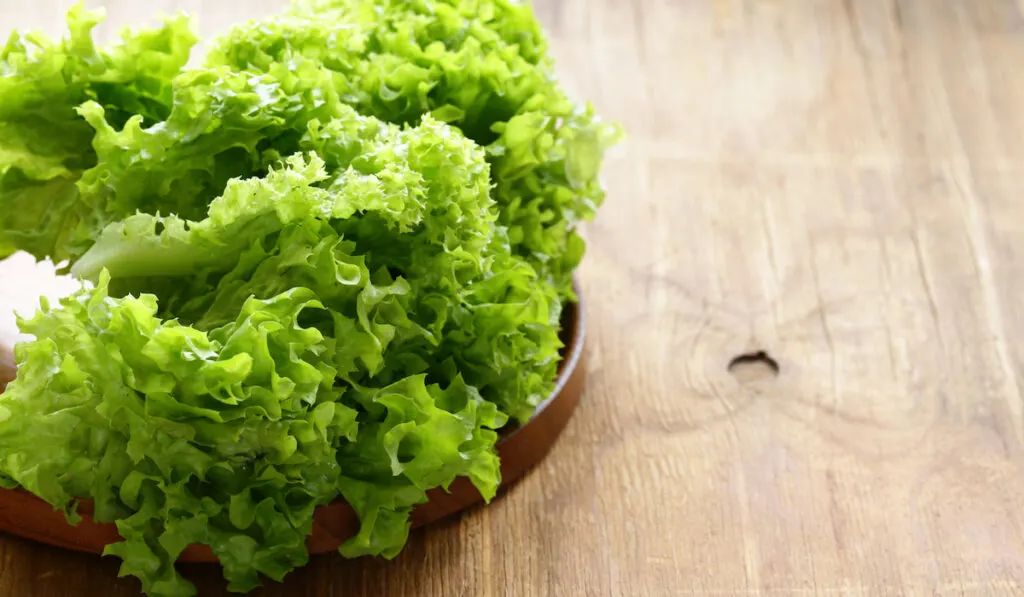
Leaf Lettuce
Unlike other types of lettuce, leaf lettuce does not grow any head: the leaves branch from just one stalk.
Since it has no head, leaf lettuce is more likely to spoil than other types.
Compared to the rest, this type is easier to cultivate, and you can harvest it multiple times in a season. Leaf lettuce comes in 3 subtypes: red, oak, and green. The red and green subtypes have mild flavors, while the oak is nutty and spicy.
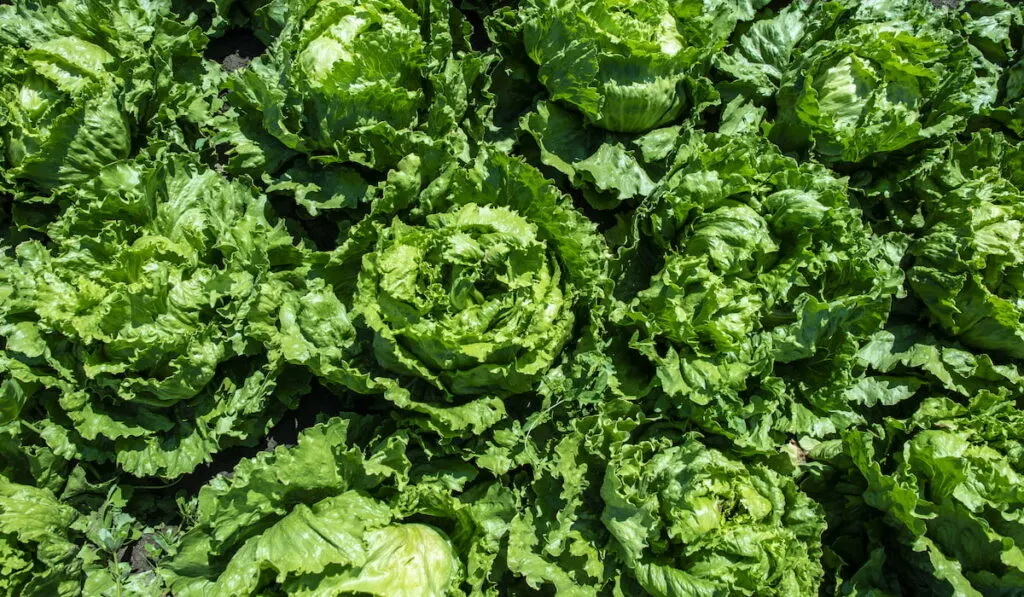
Iceberg Lettuce
Iceberg lettuce is also known as crisphead lettuce. Of all the types of lettuce, it has the highest water content.
Iceberg lettuce has pale leaves that grow in balls, like cabbages. The leaves are crunchy and have lower nutritional density, hence, their paleness.
Iceberg lettuce grows best in cool weather, and it generally requires long winter seasons for complete growth.

Stem Lettuce
Stem lettuce may also be called celtuce, celery lettuce, or asparagus lettuce. Unlike Iceberg lettuce, stem lettuce does well in both hot and cold weather. It is also easy to grow.
Stem lettuce has a thick, long stem with some leaves atop.
It is principally grown for the stem, but the leaves are edible, too.
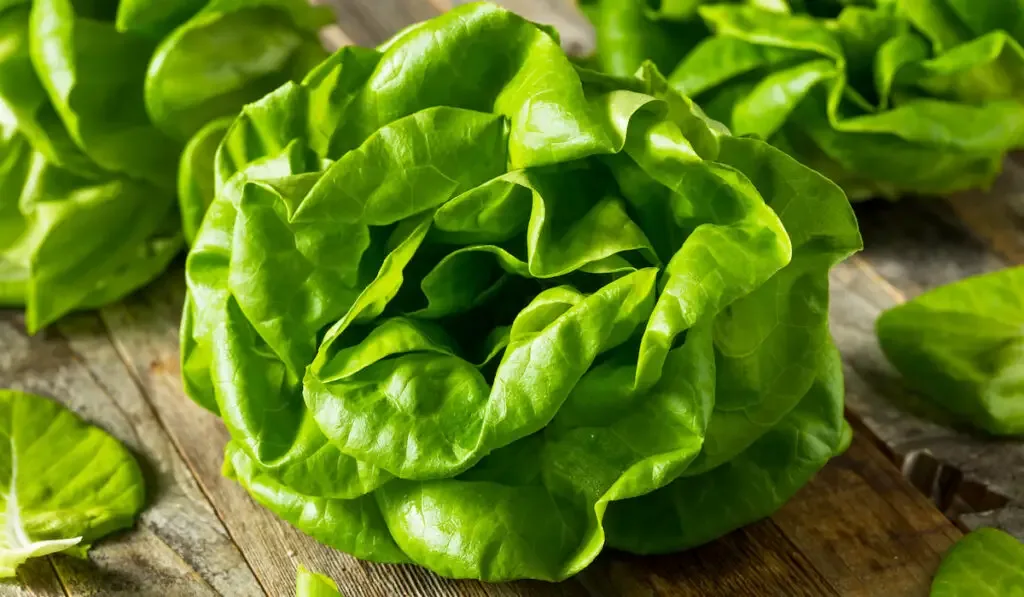
Butterhead Lettuce
Butterhead lettuce is so named because of the texture of its leaves: buttery and soft. It may also be referred to as cabbage lettuce because of its shape.
There are 2 subtypes of Butterhead lettuce: Bibb and Boston.
Boston lettuce is larger than Bibb lettuce. Its head is loosely formed, and the leaves bruise readily. Bibb, on the other hand, is sweeter. However, it is smaller than Boston – only about the size of a fist and fairly expensive.
Can Sheep Have Too Much Lettuce?
Yes, sheep can have too much lettuce. If you feed your sheep lettuce to the extent that they cannot eat anything else, that is too much.
Remember we said lettuce offers little or no nutrients to sheep? Well, if you make your sheep eat lettuce excessively, they will be unable to eat nutritious food items.
So, lettuce is best offered in moderation. You can stick to an upper limit of 2 pounds of lettuce per day when adding it to your sheep’s diet.
Do You Have to Wash the Lettuce?
Yes, you must wash the lettuce before your sheep eat it.
If you do not wash your lettuce before offering it to your sheep, you leave the sheep open to contamination. Some of such contaminations include pesticide and bacterial contamination. If your sheep consume any contaminated lettuce, they may get sick.
Besides the above, lettuce may carry dirt and other food-borne illnesses. Sheep may also get sick if they consume such lettuce.
Alternatively, you may opt for pre-washed lettuce. But while it might be free of contaminants, it is usually not as tasty as fresh lettuce.
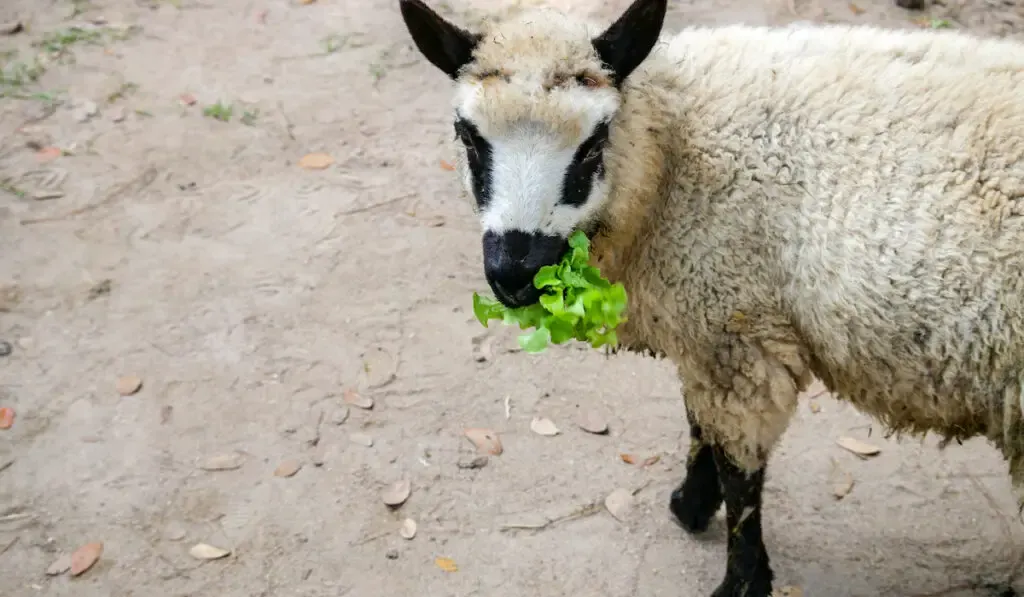
Can They Eat Wilted Lettuce?
Fresh lettuce is firm and crunchy. But as it ages, it will lose its firmness and become soft and limp. This process is called wilting. When lettuce starts wilting, it is close to rotting. But it does not necessarily become unsafe for consumption immediately.
Sheep might be able to eat wilted lettuce. But this depends on the presence or absence of other signs. When you spot signs of spoilage on lettuce, then it becomes unfit for consumption by sheep.
One sign of spoilage you may notice on lettuce is a brown or black discoloration on the leaves. Apart from that, when you perceive a pungent odor from the lettuce, that is a sign of spoilage.
Spoilt lettuce may also feel soggy, sticky, and slippery. It may also be swollen, and you may find some moisture on it.
If you notice any sign of spoilage such as those stated above, then you should not eat it, and your sheep should not eat it either.
Before offering wilted lettuce that is not spoiled to sheep, you may soak it in ice water for about 30 minutes. Doing this can help restore some of its firmness.
Summary
Lettuce does not meet the nutrition needs of a sheep. So sheep should only eat lettuce as a treat, snack, or supplement to the main diet. You should ensure you wash lettuce before offering it to your sheep. You should also inspect the lettuce for signs of spoilage. If the lettuce has spoilt, do not let the sheep eat it.
Resources
- https://farmdesire.com/can-sheep-eat-lettuce/
- https://fdc.nal.usda.gov/
- https://www.msdvetmanual.com/management-and-nutrition/nutrition-sheep/nutritional-requirements-of-sheep
- https://www.healthline.com/nutrition/19-hydrating-foods
- https://web.extension.illinois.edu/veggies/lettuce.cfm
- https://www.wikihow.com/Wash-Lettuce
- https://www.medicalnewstoday.com/articles/327028#do-you-need-to-wash-produce
- https://www.wikihow.com/Tell-if-Lettuce-Has-Gone-Bad
- https://www.medicalnewstoday.com/articles/319725
- https://www.goodhousekeeping.com/food-recipes/cooking/g532/types-of-lettuce/
- https://gardenerspath.com/plants/vegetables/grow-leaf-lettuce/
- https://www.webmd.com/diet/health-benefits-iceberg-lettuce
- https://www.cookinglight.com/eating-smart/nutrition-101/nutrition-health-iceberg-lettuce
- https://www.hobbyfarms.com/how-to-grow-celtuce-or-stem-lettuce/
- https://modernfarmer.com/2016/04/celtuce/
